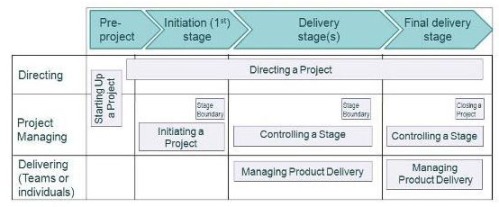This blog is going to try and link project and program management with change management and benefits realization.
As a start, the only point of undertaking a project or program is to realize some form of value. Benefit realization! To realize value, three elements need to be brought together:
- There needs to be a new product or process created (an artifact);
- People within the organization need to make effective use of the artifact to deliver a service;
- The service as delivered needs to be accepted and used in the ‘market’.
The role of Strategic management and Portfolio management is to determine what services are likely to be accepted or needed by the market; a new shopping centre, an improved insurance package or simply a more efficient process to deliver information. These decisions will depend on the objectives of the organization, and is not the province of this blog.
The generally accepted role of project management is to create a unique product, service or result (an output) and the role of program management is to manage a group of related projects to achieve an outcome more efficiently than if the projects had been managed in isolation. Neither of these processes achieves real value in themselves. The realization of sustained value is achieved by the organization using the program’s outcome effectively over many months or years.

The Scope of Change Management
Projects and, to a greater extent, programs can realize some benefits, partially in the design and delivery of their respective outputs. Early benefits realization is frequently linked to ‘soft’ elements in the range of deliverables such as developing effective training, managing the transition to operations and ensuring a proper support framework is developed. Achieving these elements require the project/program team to really understand the requirements of their stakeholders. However, as demonstrated by the cost/benefit graph, benefits realization should continue for years after the program is finished and closed.
The extended timeline for value realization has important ramifications for organizational change management. Each project is an intense burst of change and the program absorbs these changes and has additional change effects of its own. These ‘activity related changes’ will include beneficial and negative impacts on a range of associated stakeholders. Some changes are disruptive caused by the execution of the work, learning curves, etc. Some changes positive caused by the improvements the projects and programs were initiated to deliver. Achieving a successful project/program outcome requires the effective management of these stakeholder communities, but the stakeolder management activity is essentially tactical.
The critical requirement to deliver sustained value is the organizational culture change needed to actively embrace the program’s outcomes and make valuable use of them. Embedding a culture change into an organization is a 2 to 3 year process as the change migrates from ‘new and threatening’, to ‘accepted (but the old way are still fondly remembered)’ to the ‘established old way’ things are done around here. This type of long term organizational change can only be accomplished by the organization’s line management supported by senior management. This is the realm of the program sponsor and executive management!
These ideas also have important ramifications for effective stakeholder management:
- Project level stakeholder management is relatively short term and focused on minimizing opposition to the work whilst ensuring necessary organizational support is in place to deliver the project’s outputs effectively. This is essentially tactical in nature.
- Program level stakeholder management has a wider view that needs to engage with the organizations strategic vision to ensure the program’s outcome is optimized to the changing circumstances within and around the organization. The key issue here is identifying and responding to changing stakeholder requirements, needs and expectations/perceptions over time; so as to optimize the value of the ‘outcome’ the project was established to deliver.
- Organizational level stakeholder management needs an even broader and longer term view focused on the strategic needs of the organization and its long term relationship with both internal and external stakeholders. Sustained value creation requires both the organizations internal staff and its external customers to jointly perceive the programs ‘output’ as valuable to them and also to perceive the organization favorably so they together maximize its use:
- For a new shopping center with a 20 year lifespan this translates to retail tenants being willing to rent space and the ‘public’ seeing the shopping center as a ‘good place to shop’.
- For a new call centre management system this translates into the call centre staff seeing the system as efficient and easy to use and clients of the business perceiving the system and staff as friendly, efficient and effective so they are happy to make repeated use of the system.
Conclusions
Change management and stakeholder management are closely aligned. Effective stakeholder management is essential for successful change management.
Change management and stakeholder management must start as soon as the project or program are initiated but should continue well after the project/program are completed.
The on-going organizational component of change management supported by strategic stakeholder management is critical if the real value of the outputs/outcomes created by the projects and program are to be realized.
Benefits realization is a line management responsibility starting with the project sponsor. All project and program managers can do is ensure their deliverables are crafted to facilitate and encourage benefits realization.




